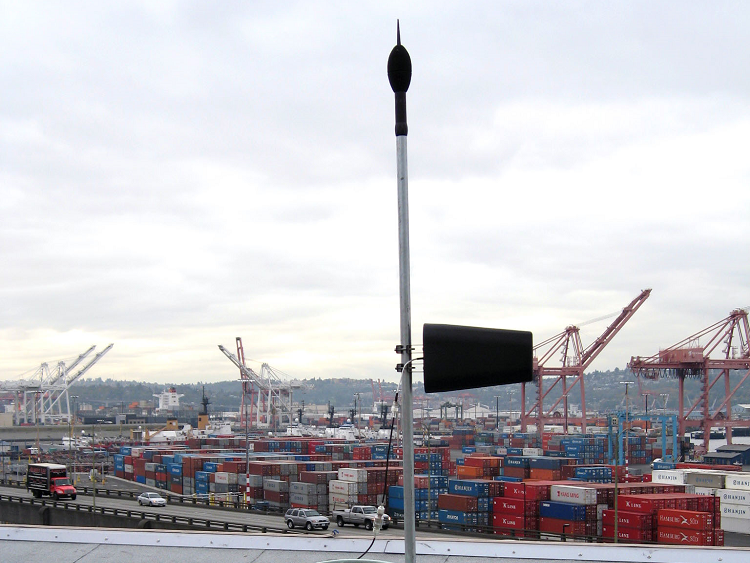Alaskan Way Viaduct Replacement Project Independent Noise Monitoring Services
Project Description
The Alaskan Way Viaduct, completed in 1953, is an elevated section of State Route 99 in Seattle. Due to the age of the viaduct and heavy vehicle volume daily, the need to replace it was crucial to public safety. In place of the viaduct, a two-mile long tunnel under downtown Seattle was proposed, as well as other major highway improvements, in order to create a safer and easier means of travel around the city.
Washington State Department of Transportation (WSDOT) requested assistance from Paul Carpenter Associates, Inc. (PCA) to establish a remote noise monitoring system throughout the north and south portal areas as well as provide Independent Noise Monitors (INMs) in the field to document construction-related noise levels throughout the City of Seattle during overnight construction activities. The remote noise monitoring system was procured and installed by PCA to track compliance of noise level thresholds established within the Major Public Project Construction Variance granted by the City of Seattle Department of Construction and Inspections (SDCI).
PCA deployed a real-time noise monitoring system, which transmits data continuously to an off-site server via wireless telecommunications technology. PCA created an innovative Compliance Website utilizing the database from eight noise monitoring terminals (NMTs). The website displayed data within graphs and tables, allowing users to quickly identify real-time noise compliance. Exceedances were clearly identified and highlighted within data views. The NMTs were programmed to record audio files which were automatically uploaded to the website and could be played back by users directly from the website. The website included several unique features such as a live communication portal to provide a permanent record of actions taken in order to address public noise complaints. In addition, complaint reports, once formally addressed, were catalogued within the compliance website database, along with corresponding communication and noise level data.
The web interface provided exceedance alerts automatically sent to authorized users via email, which detailed noise level, noise level threshold and corresponding NMT. Weekly Reports were also automatically sent to appropriate personnel once reports were certified and approved. The password-protected website was developed to be a customized user-friendly platform for PCA and authorized WSDOT/SDCI officials.
INMs were required during each overnight construction period to ensure all elements of the variance were withheld. NMTs were field-inspected quarterly and removed/reinstalled yearly for laboratory calibration.
